
hotline:
17715390137
Tel/Wechat:
18101240246 (Technology)
0512-68565571
Email:mxenes@163.com (Sales Engineer)bkxc.bonnie@gmail.com
Scan the code to follow or search the official account on WeChat:
2D Materials Fronrier After paying attention,
click on the lower right corner to contact us,
Enter enterprise WeChat.
Professional Services Online

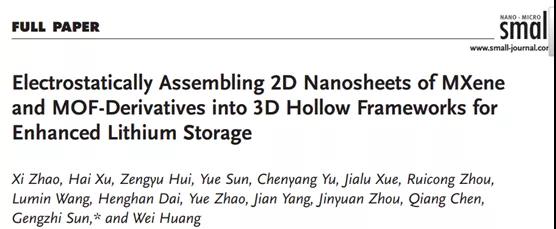
【Research Background】
Although lithium-ion batteries have not reached the expected height in terms of energy density, they have been widely used in wearable electronics, electric vehicles, and energy storage grids. Researchers have made some progress in the development of new materials, while achieving high energy storage capacity without reducing power density and cycle stability. Two-dimensional materials are considered to be ideal electrode materials because of their higher area-to-volume ratio, fast electron transfer, and optimized ion diffusion channels, which are very beneficial to the kinetics of electrochemical reactions. In particular, MXene, as a typical representative of two-dimensional materials, has some unique advantages, such as metal conductivity, lower lithium ion diffusion barrier, and negligible volume change during ion insertion and extraction. However, the application of MXene in lithium batteries is limited by its relatively low theoretical capacity (320 mAh g-1). In addition, there is a problem of re-stacking caused by van der Waals interaction and hydrogen bonding between MXene nanosheet layers, which will lead to severely reduced contact area, conductivity and active sites, which will affect energy storage capacity. Designing 2D nanosheets into 3D hollow structures is a more effective way to alleviate the problem of restacking.
[Achievement Profile]
Recently, the research group of Professor Sun Gengzhi of Nanjing University of Technology published a research paper titled: Electrostatically Assembling 2D Nanosheets of MXene and MOF-Derivatives into 3D Hollow Frameworks for Enhanced Lithium Storage in an internationally renowned academic journal Small. In this way, the negatively charged 2D MXene nanosheets and the positively charged layered double metal hydroxide derived from ZIF-67 are composited into a 3D hollow structure by electrostatic self-assembly. After annealing treatment, transition metal oxide @MXene (CoO / CoMo3O8 @ MXene) composite hollow electrode is used in lithium ion batteries. CoO / CoMo3O8 nanosheets can prevent MXene from accumulating and provide ultra-high lithium storage performance. At the same time, MXene nanosheets can form a 3D conductive network and have mechanical stability, thereby promoting rapid electron transfer in the interface and limiting the volume expansion of the internal CoO / CoMo3O8. This hollow structure provides a reversible capacity of 947.4 mAh g-1, excellent rate performance, and good cycle stability.
[Picture and text guide]
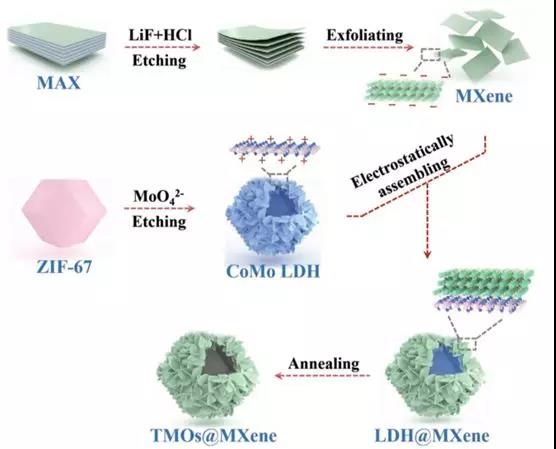
Figure 1. Schematic of TMOs @ MXene synthesis
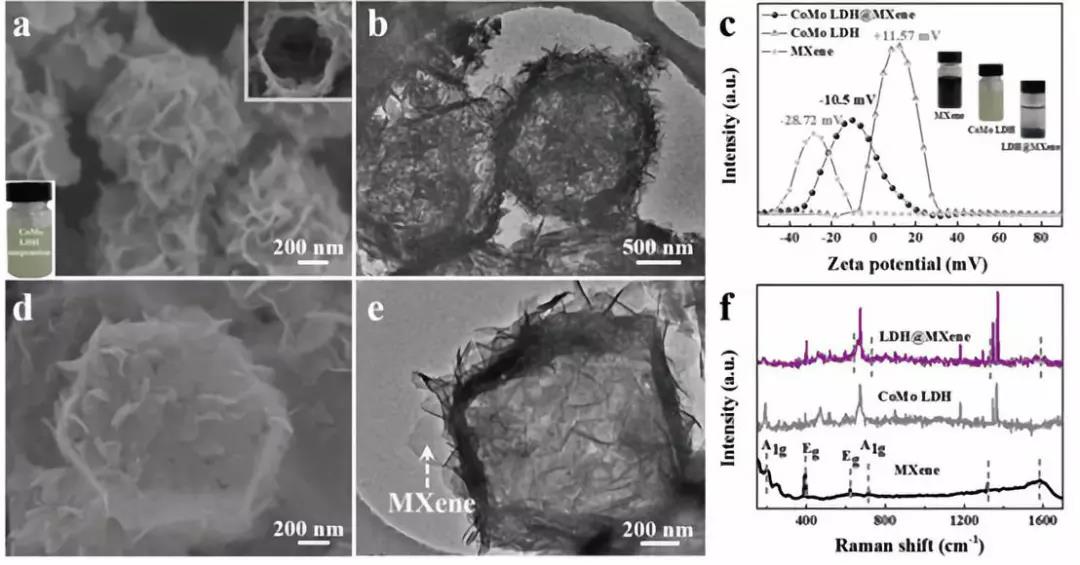
Figure 2. SEM and TEM images of hollow structure CoMo LDH; Zeta potentials of MXene, CoMo LDH and CoMo LDH @ MXene; SEM, TEM and Raman images of 3D CoMo LDH @ MXene electrode.
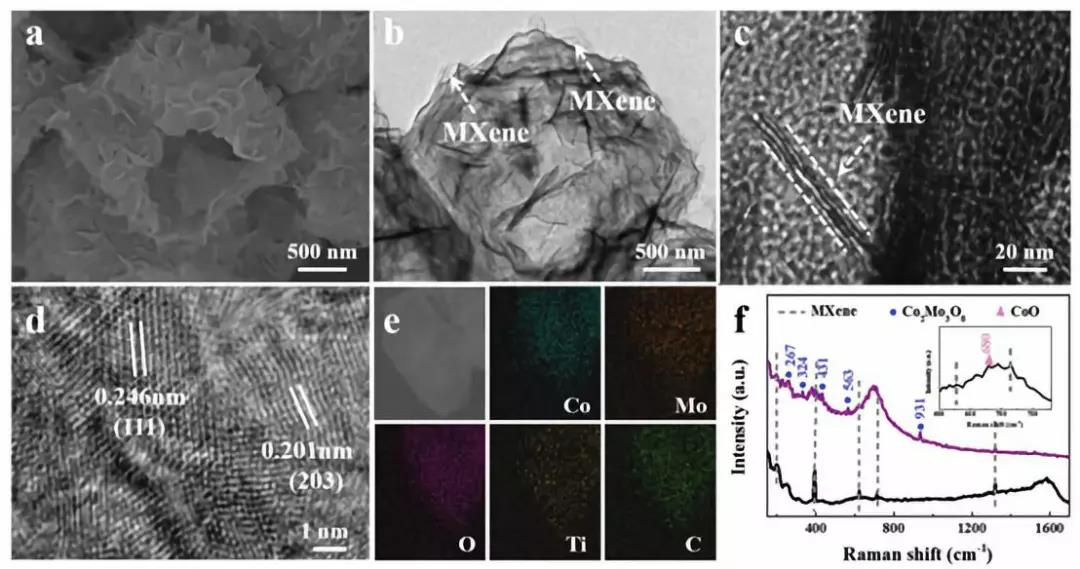
Figure 3. Morphology and physical characterization of CoO / CoMo3O8 @ MXene: SEM, TEM, HRTEM, mapping, Raman images.
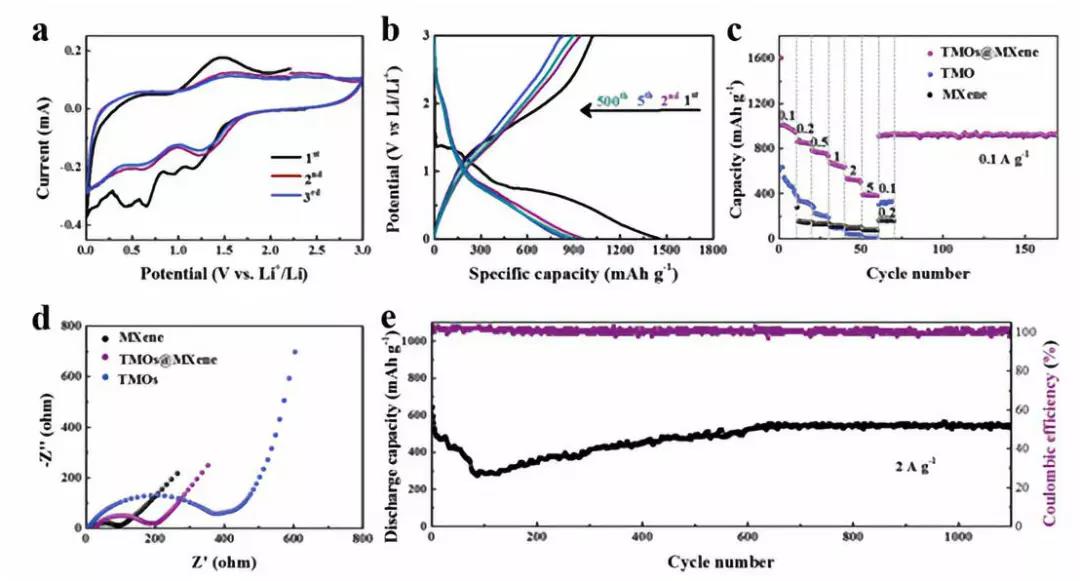
Figure 4. Characterization of electrochemical performance of CoO / CoMo3O8 @ MXene composite electrode.
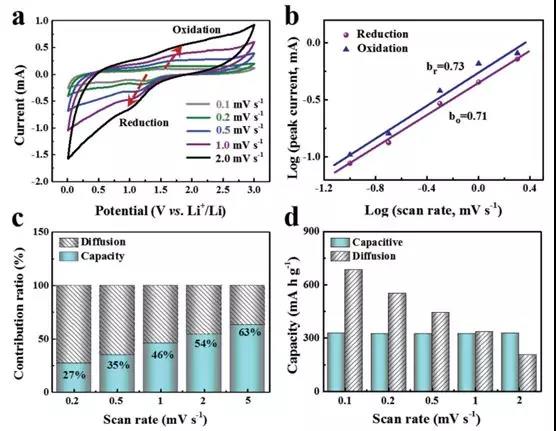
Figure 5. Capacity contribution and kinetic analysis of CoO / CoMo3O8 @ MXene composite electrode.
[Summary of this article]
This article successfully synthesized a composite hollow structure of MXene nanosheets and MOF-derived LDH nanosheets by a simple electrostatic self-assembly method. In this structure, MXene nanosheets have outstanding electrical conductivity and negligible volume changes, while TMO nanosheets enhance the lithium storage performance of the composite. The layered structure prevents the re-stacking of two-dimensional nanosheets, further improves the electrochemical kinetics, and provides sufficient pores and open transmission channels for rapid ion transport. This unique structure is a 2D nanosheet-based hollow material The preparation provides new ideas.
Literature link:
https://doi.org/10.1002/smll.201904255.

| Reminder: Beijing Beike New Material Technology Co., Ltd. supplies products only for scientific research, not for humans |
| All rights reserved © 2019 beijing beike new material Technology Co., Ltd 京ICP备16054715-2号 |